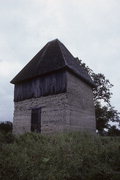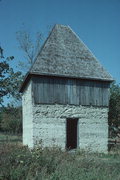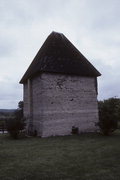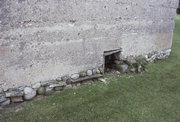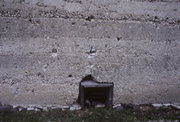Property Record
N60 W29709 RYBECK RD
Architecture and History Inventory
| Historic Name: | BEAUMONT HOP HOUSE |
|---|---|
| Other Name: | BEAUMONT HOP HOUSE |
| Contributing: | |
| Reference Number: | 7689 |
| Location (Address): | N60 W29709 RYBECK RD |
|---|---|
| County: | Waukesha |
| City: | |
| Township/Village: | Merton |
| Unincorporated Community: | |
| Town: | 8 |
| Range: | 18 |
| Direction: | E |
| Section: | 26 |
| Quarter Section: | NW |
| Quarter/Quarter Section: | SE |
| Year Built: | 1875 |
|---|---|
| Additions: | |
| Survey Date: | 1976 |
| Historic Use: | Agricultural - outbuilding |
| Architectural Style: | Astylistic Utilitarian Building |
| Structural System: | Stone |
| Wall Material: | Concrete |
| Architect: | |
| Other Buildings On Site: | |
| Demolished?: | No |
| Demolished Date: |
| National/State Register Listing Name: | Beaumont Hop House |
|---|---|
| National Register Listing Date: | 11/23/1977 |
| National Register Multiple Property Name: |
| Additional Information: | A 'site file' exists for this property. It contains additional information such as correspondence, newspaper clippings, or historical information. It is a public record and may be viewed in person at the Wisconsin Historical Society, Division of Historic Preservation. Photo code #1 is: D 110/4-8. When the hops louse wiped out hops crops in New York State in the 1860s, Wisconsin farmers quickly stepped up cultivation to ensure New York’s brewers had adequate supplies of this important beer flavoring. They put poles in their fields to grow the vines and built special hop houses to dry the flowers. At harvest time, hundreds of young women traveled to hops fields across southern Wisconsin, earning high wages for picking, drying, and sorting hops cones. After New York farmers eradicated the louse and Washington State farmers expanded hops cultivation, the bubble burst in 1868. Competition and Wisconsin’s own louse infestation soon halted this brief and profitable hops enterprise. This hop house, thirty-two feet tall with a pyramidal roof, recalls this brief episode. The building’s first story held a wood-burning stove; the small ventilator openings near the ground on three sides were air intakes. A grille of widely spaced parallel boards separated the stove room from the second-floor drying room. Green hops flowers dried on burlap or cheesecloth, which stretched over this grille. Vertical slats under the eaves on the front of the building created a draft, drawing hot air upward while keeping it from escaping quickly. The walls are made of grout, an early type of concrete. The builder raised these in layers by erecting wooden forms, into which he dumped rubble larger than the gravel typically used in grout construction and then poured mortar around it. When the mortar hardened, the builder removed the forms and repeated the process in successive layers, which are indicated by horizontal marks on the walls. |
|---|---|
| Bibliographic References: | Buildings of Wisconsin manuscript. |
| Wisconsin Architecture and History Inventory, State Historic Preservation Office, Wisconsin Historical Society, Madison, Wisconsin |

